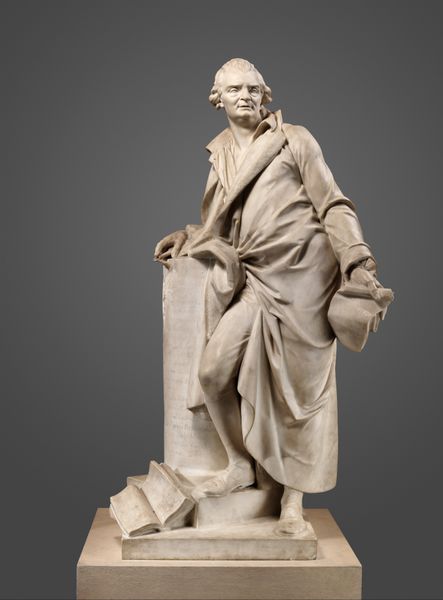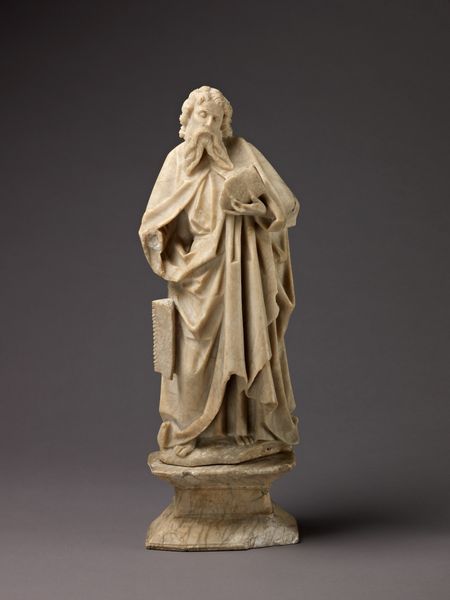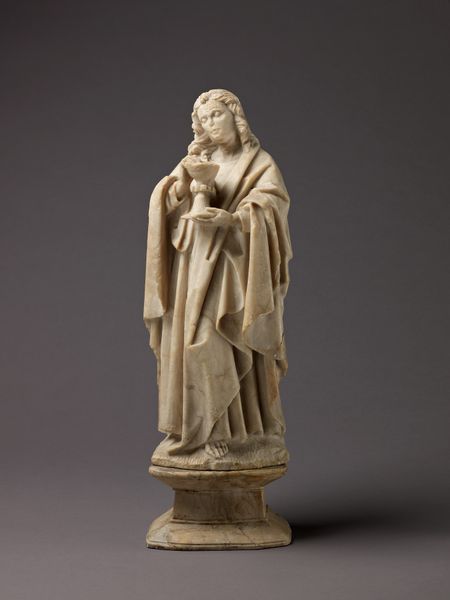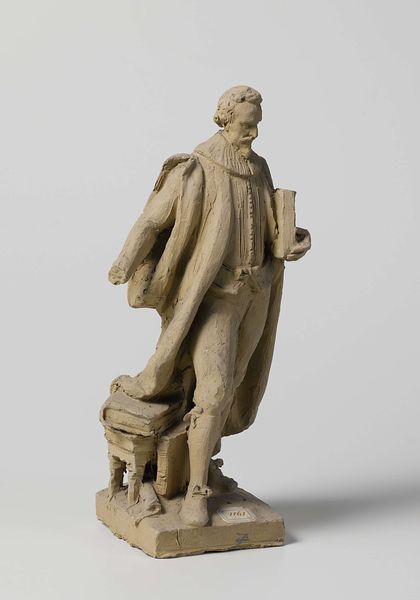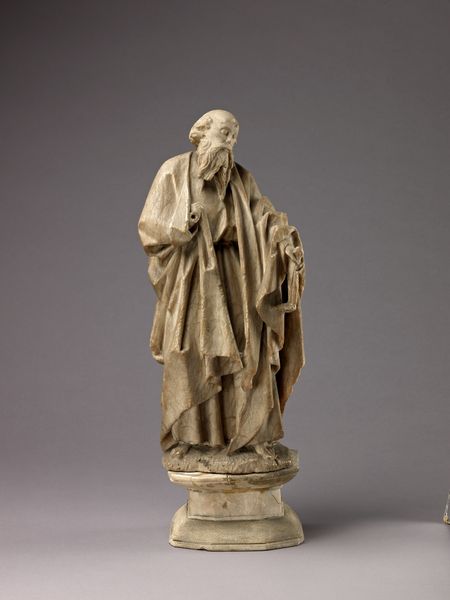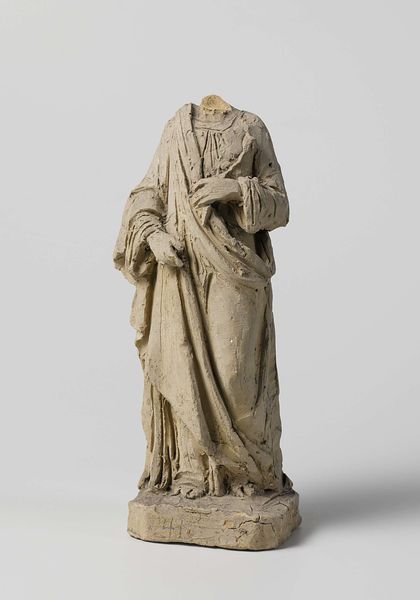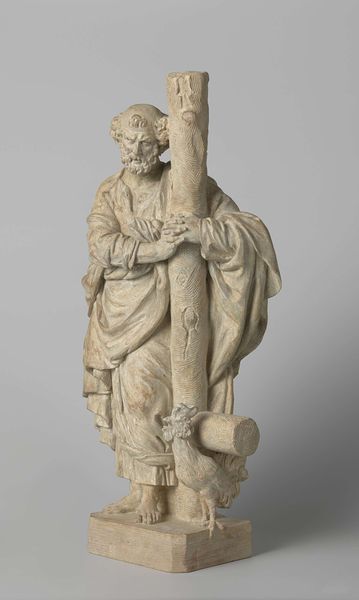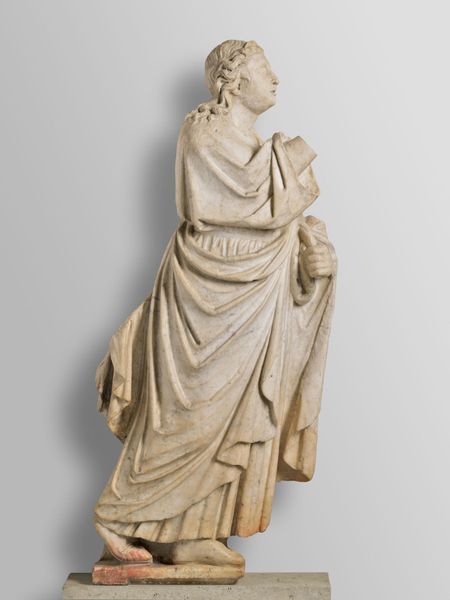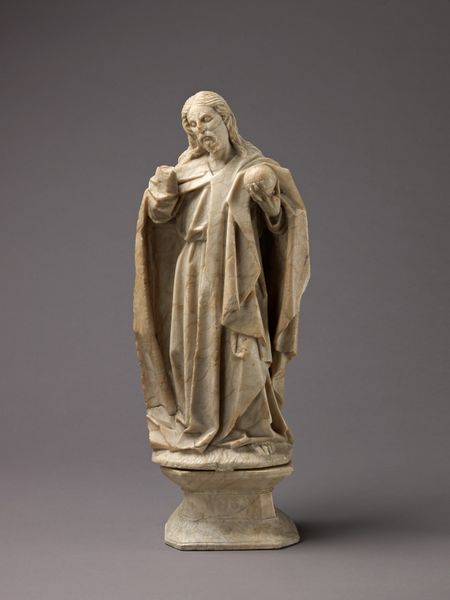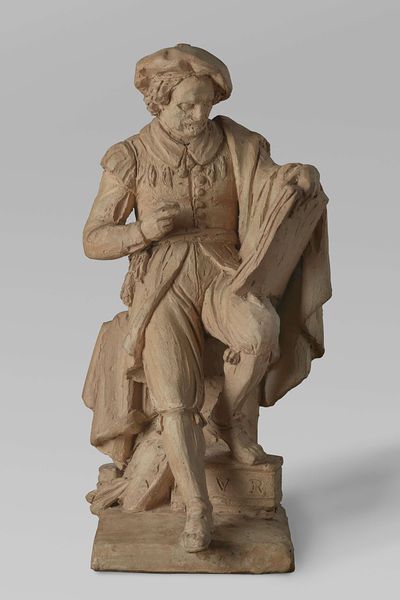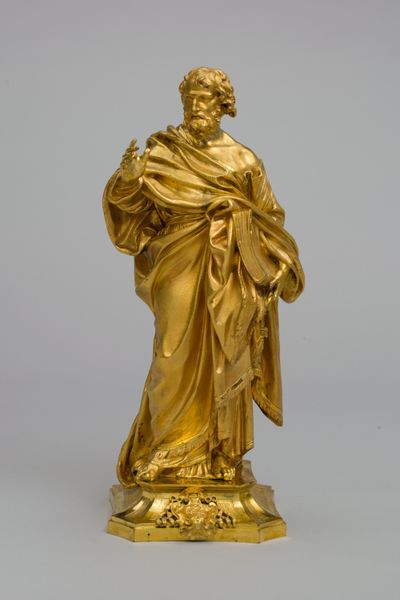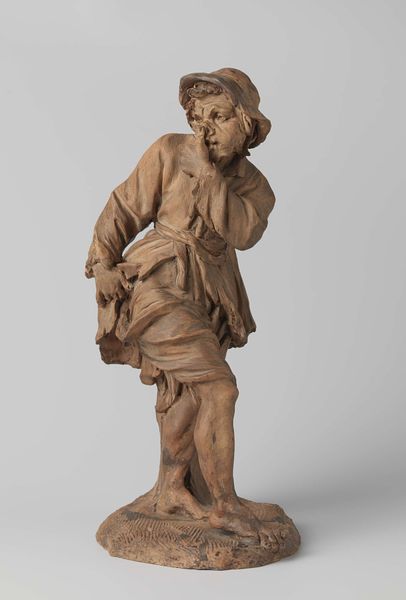
Dimensions: height 105 cm, width 52 cm, depth 36 cm, weight 52 kg
Copyright: Rijks Museum: Open Domain
Editor: This is Walter Pompe’s "St James the Less," carved in wood in 1773. It strikes me as very serene, but also weighty – both literally, I suppose, and in terms of the subject matter. What do you see in this piece that I might be missing? Curator: Well, let's consider the period. In 1773, Europe was wrestling with Enlightenment ideals, challenging established power structures. How does a sculpture of a saint function in that context? Is it a straightforward expression of faith, or could it also represent a more subtle commentary on power, authority, and the roles we assign to historical figures? Look closely at how Pompe renders St. James’s humility through posture and dress, then compare this representation with Baroque depictions of powerful secular rulers, can we infer any shift in societal values and perception of power during the time of its creation? Editor: That's interesting! So, it's not just about the religious figure himself, but also what the sculpture might be saying about the changing roles of religious and secular authority at the time? Curator: Exactly. Think about how religious narratives were used throughout history, sometimes to justify power structures, sometimes to challenge them. What elements might lead us to see resistance, compliance, or maybe negotiation here? Does St. James, depicted in this manner, encourage critical reflection on faith, and power dynamics during the rise of Enlightenment philosophy? And what does it say about the role of artists in that conversation? Editor: This makes me think differently about how religious art can engage with social and political change. I came in thinking about piety, and now I am thinking about the sculpture and its potential political or social implications! Curator: That's the point! Art is rarely created in a vacuum. Context is key and shapes both production and interpretation.
Comments
No comments
Be the first to comment and join the conversation on the ultimate creative platform.
